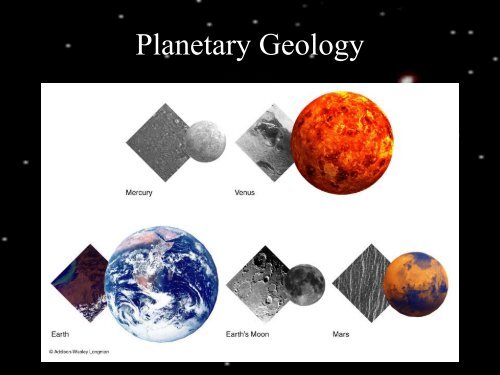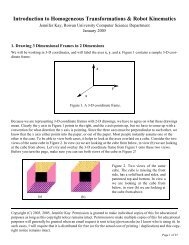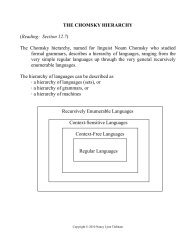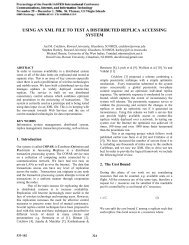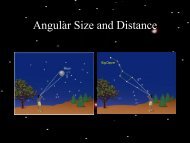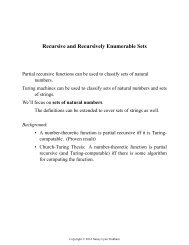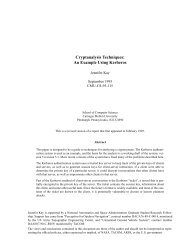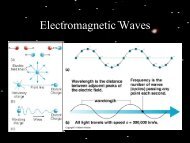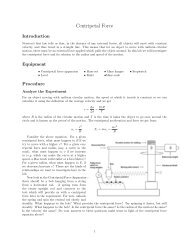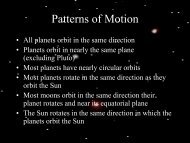Planetary Geology
Planetary Geology
Planetary Geology
Create successful ePaper yourself
Turn your PDF publications into a flip-book with our unique Google optimized e-Paper software.
Terrestrial Planets and the Moon• The interiors are hotter and denser• Note trends with size and distance from Sun• Lots of processes lead to these structures
Three Sources of Internal Heating• Accretion of planetesimalscontinues after formationand can change thecomposition slightly• Differentiation occursbecause the materials arehot and molten• Nuclear reactions occur inthe dense central regions
<strong>Planetary</strong> Cooling• Conduction directlytransfers heat from thelower layers to theupper layers• Convection carrieswarmer parts of themantle closer to crust• Eruptions deposit hotlava onto the surfacewhere it cools
<strong>Planetary</strong> Magnetic Fields• Metal in liquid ormolten form needed• Motion due to rotationor convection needed• Some planets lack theability to producesignificant magneticfields
Formation Properties andControlling Factors
Geological Processes• Impact cratering: asteroids, comets, andother planetesimals impacting the surface• Volcanism: the eruption of molten rock(lava) onto the surface• Tectonics: the disruption of the surface dueto internal forces (e.g. convection in mantle)• Erosion: the wearing down of surfacefeatures by water, wind, and other factors
Impact Cratering
Cratering Rate
Cratering on the Moon
More Craters
Past Volcanism in the Moon
The Near Side of the Moon
Tectonics on Earth and Venus
Past Tectonics on Mercury
Past Liquid Water on Mars?
The Surface of Mercury
Venus
The Surface of Mars


